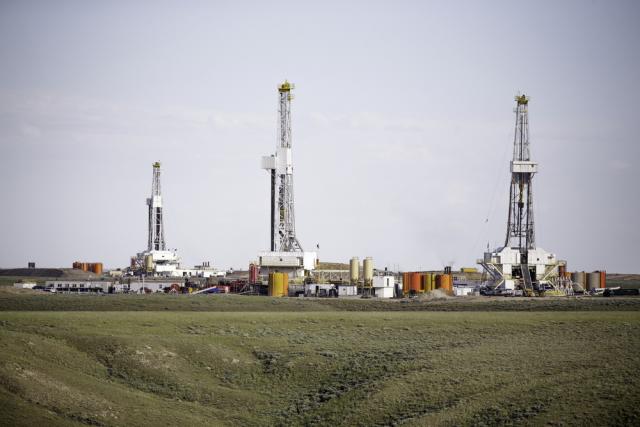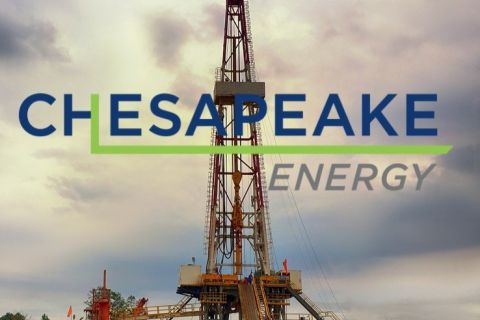
Fiber optics can be used for diagnostic fracture injection tests, like detecting strain, decay, stress and temperature, among other things within the well. (Source: Shutterstock)
THE WOODLANDS, TEXAS – The spirit of collaboration and innovation was in the air at the 2023 Society of Petroleum Engineers Hydraulic Fracturing Technology Conference and Exhibition.
During the Feb. 1 opening plenary session, executives and engineers from SM Energy, Devon Energy, Hess Corp. and Fervo Energy discussed key findings from projects and how these developments led to follow-up business decisions in other fields.
“We need to say ‘yes’ more often to learning [and] applying that knowledge, really just using our relationships,” said Mary Ellen Lutey, senior vice president of exploration, development and EHS at SM Energy.
During the session, Lutey illustrated how working together can lead to innovation, especially in the use of fiber optics, which can capture measurements and gather information about downhole conditions to provide more context to the data being gathered from the well. In 2020, Erich Kerr, engineering supervisor at SM Energy, extolled the benefits of fiber optics to Lutey and suggested it could be used for diagnostic fracture injection tests. The technology can be used to detect strain, decay, stress and temperature, among other things within the well.
Devon Energy’s use of fiber optics and other technologies raised their completion efficiency from 19% to 81%, said Kourtney Brinkley, drillings and completions engineer.
Working primarily in the Eagle Ford region, Devon experienced parent completions that Brinkley described as suboptimal.
“We had to have some significant drawdown in our parent networks, and we weren't actually invading the entire face of the core as we were pulling it out of the ground. Additionally, the samples where we did find proppant were pretty sparse,” Brinkley said.
Through the use of fiber optics, downhole gauges and sealed wellbore monitoring, Devon was able to raise its completion efficiency and make strides with contacting new rock.
After initially believing they were re-dilating parent networks, the company’s engineers realized they were making completely new fractures in the ground. Devon was able to increase its estimated ultimate recovery from 27% to 46% in comparison to the original completion approach, said Brinkley.
Using fiber optics to monitor geothermal fracking
While SM Energy and Devon are using fiber optics for traditional hydraulic fracturing in shale, Fervo Energy is using fiber optics for monitoring the results of geothermal fracking.
“We're working on a reservoir management concept that is very similar to what’s done in shale,” Fervo CTO Jack Norbeck said. “We’re doing horizontal drilling, multi-stage hydraulic fracturing using distributed fiber optics for monitoring characterization. There's a lot of similarities about what we're trying to do and what [shale] does every day.”
Geothermal fracking makes cracks in hot rocks where none existed, allowing heat to be harvested from Earth's interior. Larger frac plugs and well casings are required to survive temperatures reaching as high as 425 F.
Hess’ augmented drainage development involves producing oil from an unstimulated well that produces from the fracture network created by the offset wells.
“We are starting to look at something called augmented drainage development, where we drill two standard laterals. And then we drill another lateral in between it—these are all at the same time,” said Craig Cipolla, senior completions engineer at Hess, adding that the next step involves fracking through the uncemented slotted liner.
Hess first introduced this idea back in 2021 and has “no idea whether it’s going to turn into a transformational concept at all,” according to Cipolla. Nevertheless, the company is getting record production from hydraulic fractures in the far-field, and finding the idea promising, drilled two more wells in that fashion in 2022.
Recommended Reading
Kimmeridge Fast Forwards on SilverBow with Takeover Bid
2024-03-13 - Investment firm Kimmeridge Energy Management, which first asked for additional SilverBow Resources board seats, has followed up with a buyout offer. A deal would make a nearly 1 Bcfe/d Eagle Ford pureplay.
Chesapeake Slashing Drilling Activity, Output Amid Low NatGas Prices
2024-02-20 - With natural gas markets still oversupplied and commodity prices low, gas producer Chesapeake Energy plans to start cutting rigs and frac crews in March.
CEO: Magnolia Hunting Giddings Bolt-ons that ‘Pack a Punch’ in ‘24
2024-02-16 - Magnolia Oil & Gas plans to boost production volumes in the single digits this year, with the majority of the growth coming from the Giddings Field.
Matador Resources Declares Quarterly Dividend
2024-02-14 - Matador Resources will pay a $0.20 dividend on March 13 to shareholders of record by Feb. 23.
Matador Resources Announces Quarterly Cash Dividend
2024-04-18 - Matador Resources’ dividend is payable on June 7 to shareholders of record by May 17.






